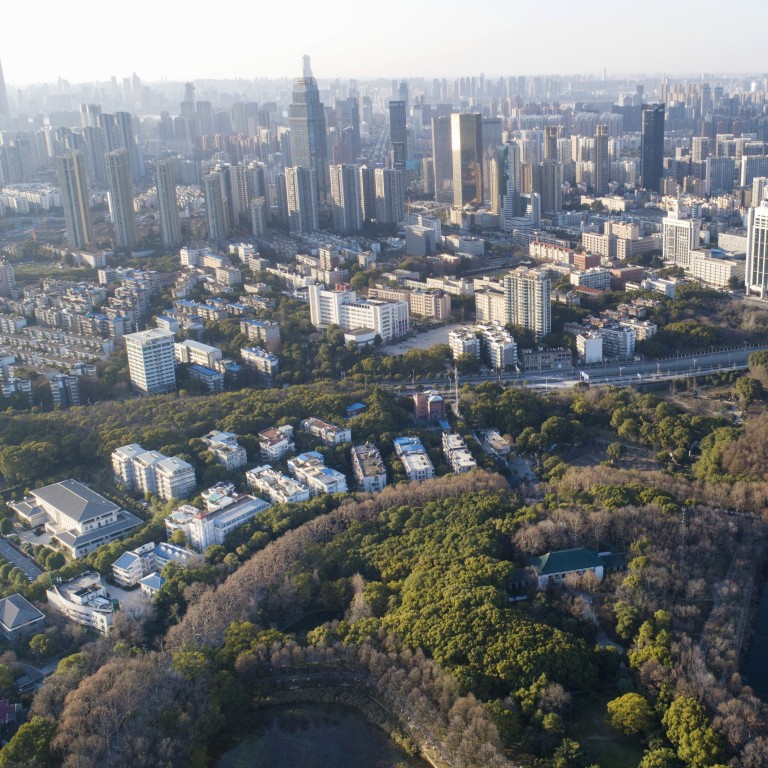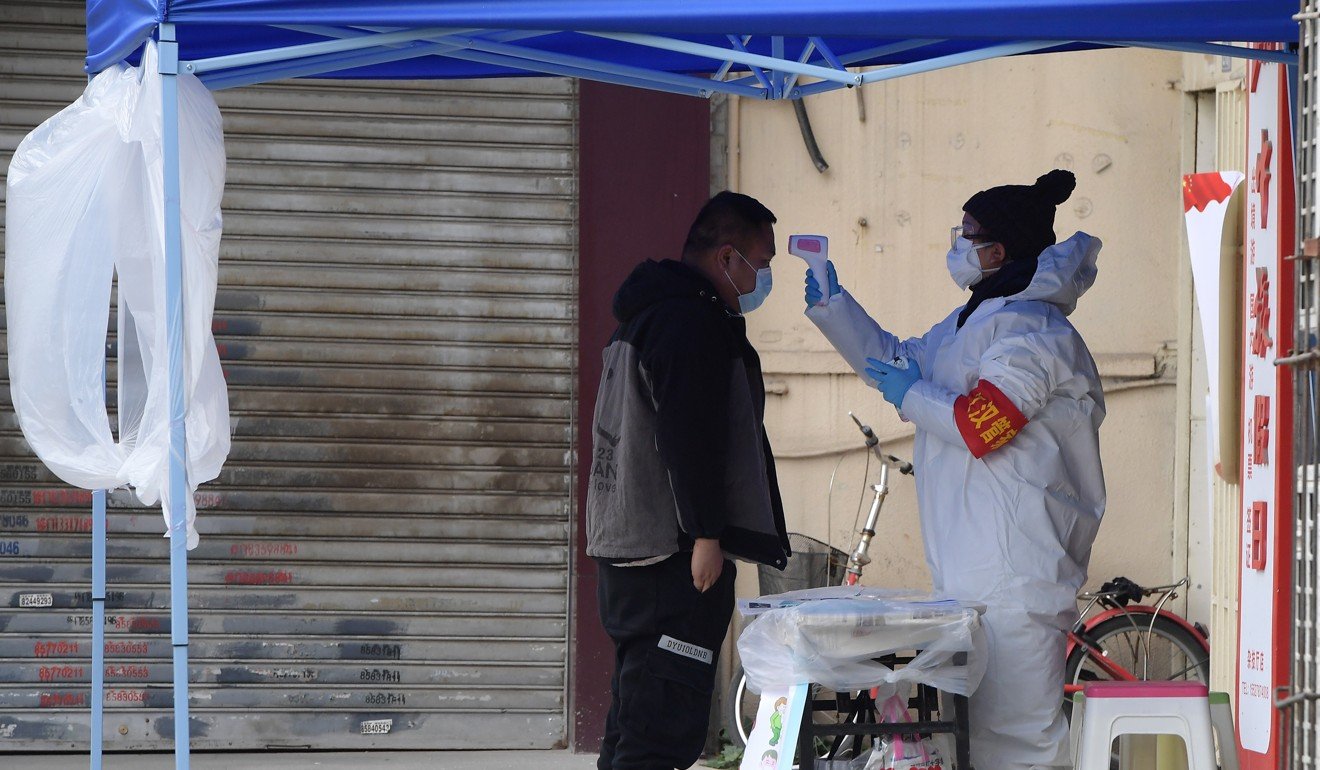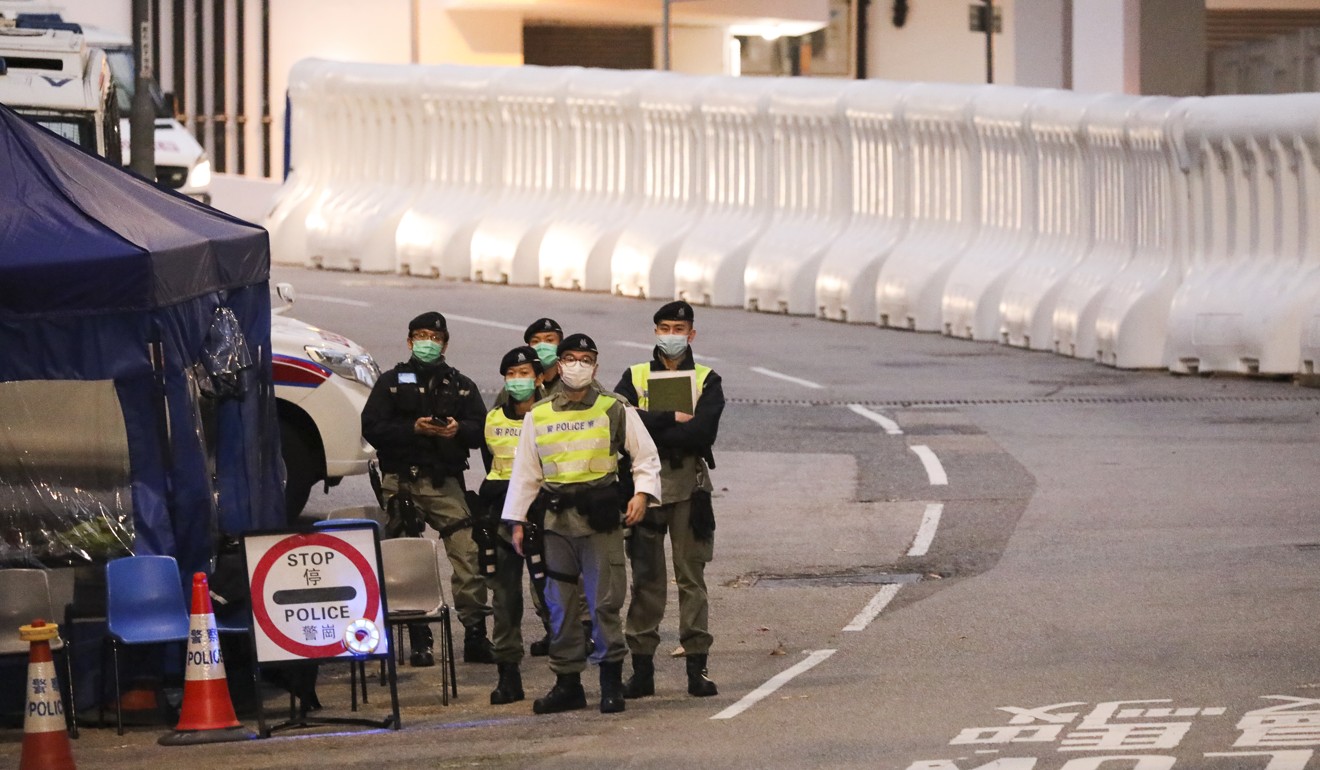
Coronavirus: Hong Kong to send flights to rescue residents stranded in Wuhan – including several pregnant women – but cannot say when
- Decision comes as a mother and daughter are found to be first known cases of Hong Kong residents escaping Hubei province
- Hoped-for easing of Wuhan lockdown, meanwhile, scuppered after just three hours
China’s health authorities reported 409 new cases of the coronavirus infection on Monday and 150 more deaths, taking its totals to 77,150 and 2,592 respectively.
All but one of the new deaths were in Hubei province – which also accounted for 398 of the new cases. The other fatality was in the southern province of Hainan.
At a press conference on Monday night, the Hong Kong government confirmed an earlier Post report that it would arrange flights to get about 2,700 residents out, following mounting pressure from various political groups.
But Secretary for Constitutional and Mainland Affairs Patrick Nip Tak-kuen said it would be difficult to provide a time frame with residents scattered across 37 cities.

Hong Kong ID card holders with no symptoms of fever, respiratory or infectious diseases will be allowed to board the flights.
“Under our plan, the first flight will include some of the 450 residents stranded in Wuhan city, as well as emergency cases stranded in other parts of the province,” Nip said.
These would include pregnant women, patients with severe illnesses, those who need to undergo surgery, as well as students taking the Diploma of Secondary Education examination.
Erick Tsang Kwok-wai, the Immigration Department chief who led the Diamond Princess cruise rescue in Japan, would also be in charge of this operation.
The ship was docked off Yokohama from February 4, with 369 Hongkongers on board. Some 240 have returned to the city.
While 10 patients were in hospital, Nip said the other was quarantined at home.
It was unclear when all the residents could return home or how many flights would be needed to get them all back.
“We have to deal with it carefully, minimise the public health risk … and we have to take into account the epidemic situation on the mainland as well,” Nip said.
“To transfer a group of people from one place to another involves a lot of risk.
“All the local transport [in Hubei] is down, so if we have to get residents to the airport, we need the support of the Hubei provincial government.”
To transfer a group of people from one place to another involves a lot of risk … if we have to get residents to the airport, we need the support of the Hubei provincial government
Executive councillor Dr Lam Ching-choi agreed there was little possibility the chartered flights could be sent this week.
Lam said the returnees, just like those from the infected cruise ship, would be quarantined for 14 days on a newly built public housing estate in Fo Tan – the city’s fifth containment centre.
“Fo Tan has the best facilities and security compared with the other quarantine centres and would be more suitable for higher-risk cases,” Lam said.
Pictures of the rapid expansion at Lei Yue Mun Park and Holiday Village, another quarantine site, went viral on Monday as the government confirmed it had used prefabricated containers to build 350 extra places. A source said 120 of these should be ready by Saturday.
Meanwhile, in the first known case of Hongkongers escaping the lockdown, a woman and her child fled from Yichang, where they had been stranded since January, and entered Hong Kong via Shenzhen Bay Port on Saturday. They were both in quarantine at Lei Yue Mun Park and Holiday Village after declaring their stay in Hubei.
“I feel relieved and much safer now,” the woman, who called herself Eva, told the Post through the Federation of Trade Unions.
For those that remained stuck in Wuhan, there had been a brief glimmer of hope on Monday morning when authorities said visitors could leave – only for it to be abruptly revoked.
A Wuhan official, speaking on condition of anonymity, said the local government had wanted to signal that the city’s situation was improving on Monday, but the decision was rejected because it was not in line with President Xi Jinping’s instructions.

Xi on Sunday said areas that were at lower risk from the epidemic could adjust their prevention and control strategies and move towards getting back to normal. But high-risk places should continue to focus on epidemic prevention and control.
“Obviously, Wuhan is classified as a very high-risk area, so relaxing these restrictions is definitely not a priority,” the official said.
The U-turn drew criticism across the country, including from Hu Xijin, editor-in-chief of the state-run tabloid Global Times, who said it had damaged the local government’s credibility.
“How is it that the team in charge of Wuhan’s traffic control has the guts to issue a notice in the name of Wuhan’s anti-coronavirus committee?” Hu wrote on Weibo, China’s Twitter.
Additional reporting by Kristin Huang and William Zheng


